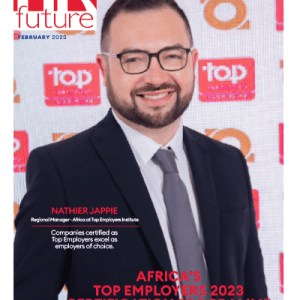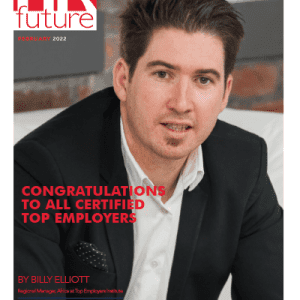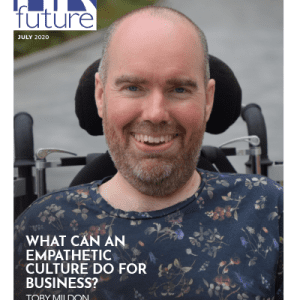The fleeting trends vs the real shifts impacting employee satisfaction and organisational success
In just a few short years, the way people view and engage with work, workplaces and their careers has shifted. Remote work, the return to the office, hybrid work, the entrance of AI into the mainstream, and a multitude of other changes make understanding the genuine needs of a diverse, intergenerational talent pool both a challenging and exciting prospect for HR professionals and their organisations.
Minding the generation gap
Much has been said about the characteristics of the different generations and their approaches to work and their employers, from Boomers, Gen X, Millennials, and Gen Z. What perhaps isn’t as clear is how can companies manage intergenerational teams so that there is greater understanding, communication, and development of shared values.
The truth is intergenerational workforces have always existed – the difference now is that younger employees are more aware of their rights and are more vocal about their expectations. The difference between generations and the subtle, and sometimes not-so-subtle, nuances can get lost without intentional two-way communication.
Organisations need to create space for people to learn from one another instead of interactions in the workplace where a younger person may feel foolish for asking a question, and an older person may feel foolish for not understanding current cultural or social touchpoints. Both can learn from each other if there’s mutual respect and open dialogue.
Fostering a healthy intergenerational dynamic is key to creating a harmonious workplace. This involves expanding what is meant and understood by diversity and inclusion to encompass socio-economic background, age, and belief systems, in addition to race and gender.
Tackling proximity bias
Proximity bias, defined as the tendency of companies to favour employees who are physically present in the office, can be a serious challenge for organisations, whether the bias is real or perceived. When staff are working remotely or largely hybrid, what often gets lost are those informal ‘coffee chats’, which are seemingly casual conversations that contain really valuable information for both employers and employees.
In hybrid work environments, clear expectations for communication should be set up from the very beginning. For instance, being online with cameras on at specific times and acknowledging messages promptly. Focusing on outcomes rather than hours spent working is another key strategy – it’s about the quality and timeliness of the work, not just the time spent doing it.
Setting clear goals and boundaries helps ensure that everyone is aligned and productive, regardless of their location.
Combatting well-being washing and hustle culture
Most people will be familiar with the term ‘hustle culture’, often glorified in the media, as the belief that overworking, not taking leave, and being in a high-stress environment are simply the price that must be paid for advancing one’s career, which is an unfortunate but persistent perception.
There’s a misconception that success requires constant overworking. The term ‘work-life rhythm’ over ‘work-life balance’ is preferable given the reality that sometimes work takes precedence and other times, personal life does. It’s about finding a sustainable rhythm that accommodates both.
Similarly, ‘well-being washing’ or the practice where companies prioritise projecting an external image of being focused on employee well-being despite internal policies not supporting this, reflects growing concerns about workplace wellness and work-life balance. Transparency alongside a genuine commitment to employee well-being cannot be stressed enough.
Organisations should be able to back their wellness programs with real actions and support. It’s not enough to have a mental health app if managers and the company culture don’t really accommodate employees’ mental health needs.
Recognising and responding to genuine employee needs
Understanding what employees truly need requires active engagement and regular feedback. Recognising employees’ contributions to ensure benefits and job perks are wanted and meaningful also relies on open, ongoing communication. HR teams should be doing this fairly regularly in a setting where the data can be collected.
How many people want more leave? How many people want more flexibility in their workday? How many people would love for the company to pay for an Uber three days a month, just so that they can get the work done and pick up their kids from school?
New trends versus permanent shifts
So how do companies go about distinguishing between a passing trend and permanent shifts in what employees want? Part of the answer is being open to new ideas and continuous learning. There are white papers on best practices which are important to lean on, but if HR teams get the sense that there’s a change on the horizon, it should be seen as a chance to open the dialogue with employees.
Your staff are an amazing source of information. And while you’re gaining that information from the group, you’re building relationships and engaging with them too.
The workplace is always changing. Thirty years ago, it was different from today, and it will continue to change. By fostering a culture of learning and open communication, it’s possible to create workplaces that adapt and thrive, irrespective of trends.
Term definitions:
1. Multi-generational workforce
Definition: A staff complement comprised of people from several generations. As more people work past the age of retirement, the age diversity in workforces across the world is expected to become the widest ever.
2. Proximity bias
Definition: Proximity bias describes the tendency of leadership to favour employees in the office. Managers with proximity bias view remote workers as less committed and productive than those in the office. The outdated assumption that people are more productive in the office than at home is a key driver of proximity bias.
3. Quiet thriving
Definition: Quiet thriving is an alternative to the term quiet quitting. With quiet quitting, people do the bare minimum of their jobs to get by. With quiet thriving, people make changes to their workday to shift their mentality to feel more engaged.
4. Perk-cession
Definition: Companies are scaling back on some of their fun benefits or perks, known as the perk-cession. These benefits once helped increase employee satisfaction and loyalty. They are closely related to anti-perks, which are benefits that employees don’t really care about or sound good but can actually decrease productivity and well-being.
5. Well-being washing
Definition: Well-being washing refers to the practice where companies prioritise projecting an image of being focused on employee well-being for external/recruitment purposes while internally neglecting their staff.
6. Hustle culture
Definition: Hustle culture refers to the mentality that employees must work more than normal hours to advance their careers. Hustle culture encourages employees to work longer hours and get work done at a more rapid pace.
Alison Palmer is the Head of Human Resources at Dariel Software.














